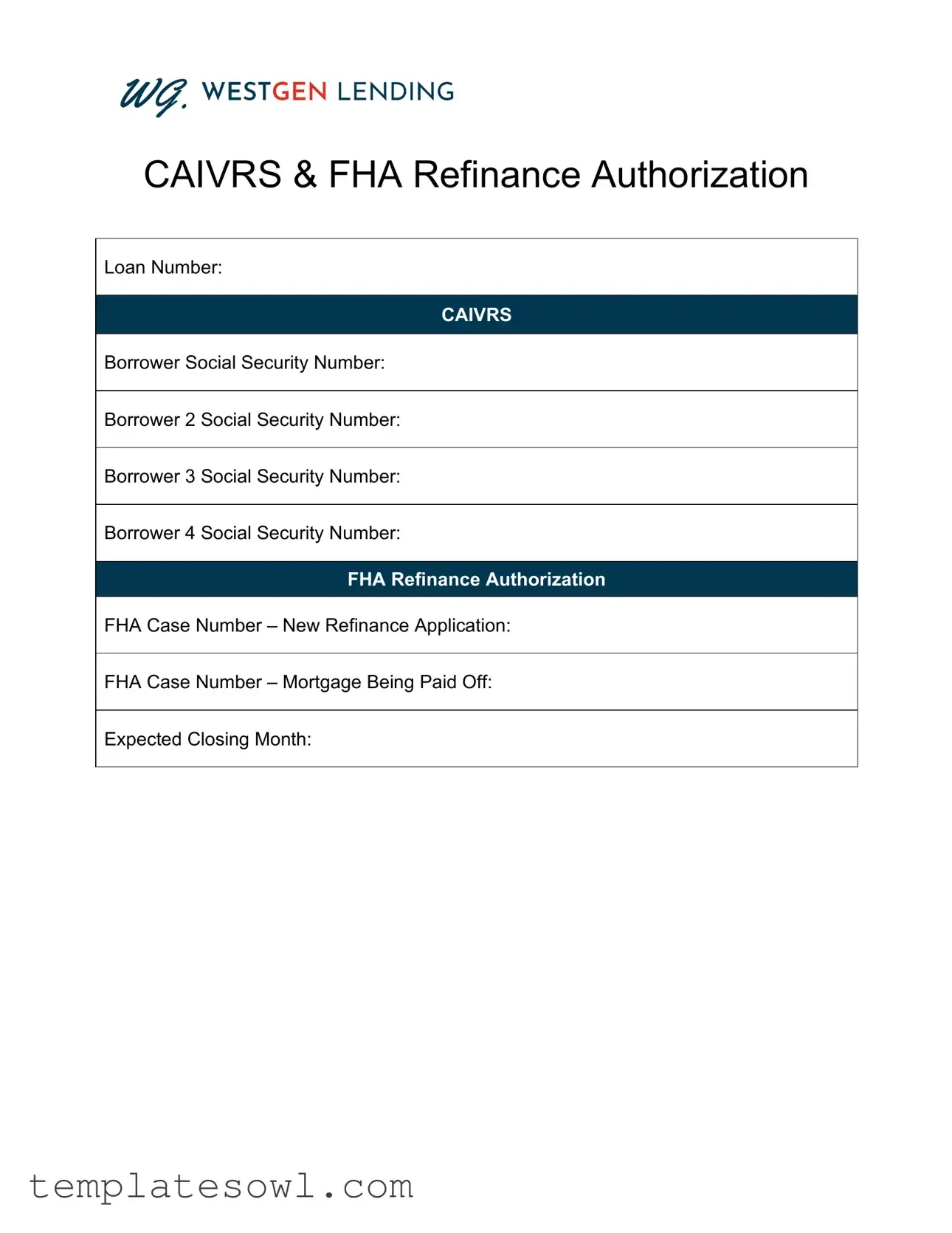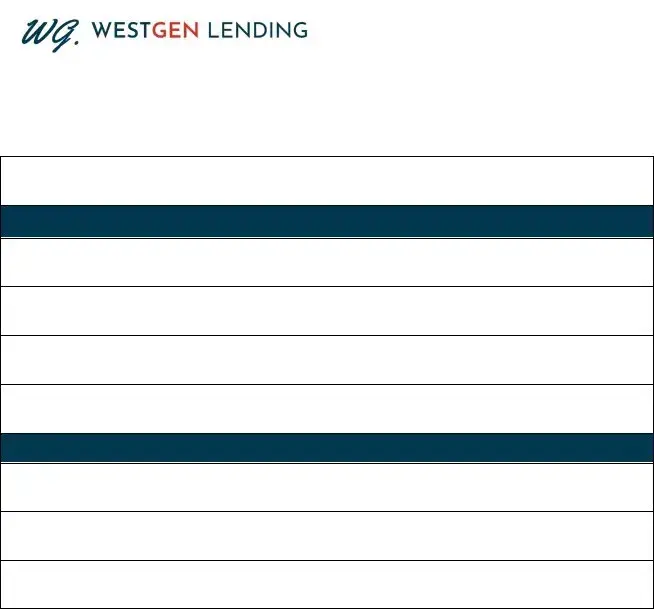What is the FHA Refinance Authorization form?
The FHA Refinance Authorization form is a document that authorizes the Federal Housing Administration (FHA) to gather information regarding a borrower's mortgage and credit status. This form is essential for individuals looking to refinance an existing FHA loan. It ensures that the lender can access necessary data to determine eligibility for refinancing options.
What information is required on the form?
The FHA Refinance Authorization form requires several key pieces of information, including the loan number, Social Security numbers of all borrowers involved, and FHA case numbers for both the new refinance application and the mortgage being paid off. An expected closing month is also requested to help manage the refinancing process effectively.
Who needs to sign the FHA Refinance Authorization form?
All borrowers listed on the refinance application must sign the FHA Refinance Authorization form. This includes anyone whose name is on the existing mortgage, as well as anyone seeking new financing under the refinance program. Their signatures indicate consent for the lender to access their financial information.
Is this form mandatory for FHA refinance applications?
Yes, submitting the FHA Refinance Authorization form is mandatory for all FHA refinance applications. Lenders will require this form to proceed with the application process. Without it, the loan request may be delayed or denied due to the inability to retrieve necessary credit and mortgage information.
How does the information on the form affect the refinancing process?
The information provided on the FHA Refinance Authorization form plays a crucial role in the refinancing process. Lenders use the detailed data to assess the borrower’s credit profile and determine the eligibility for favorable refinancing terms. Accurate and complete information can help expedite the approval process.
What happens if I do not provide accurate information on the form?
Providing inaccurate information on the FHA Refinance Authorization form can lead to complications during the refinancing process. It may result in delays, additional scrutiny by lenders, or even denial of the refinancing request. Therefore, it is essential for all borrowers to ensure that the form is completed accurately before submission.
Can the FHA Refinance Authorization form be revoked after submission?
Once the FHA Refinance Authorization form is submitted and processed, it is generally viewed as binding. However, borrowers do have the option to revoke their consent at any time before closing the loan. This may require notifying the lender formally, as well as withdrawing the refinance application if necessary.
How can I obtain the FHA Refinance Authorization form?
The FHA Refinance Authorization form can typically be obtained directly from your lender or through the FHA's official website. Many lenders provide this form as part of their refinancing package. It is advisable to consult with your lender for the most current version and any specific instructions required for completion.

